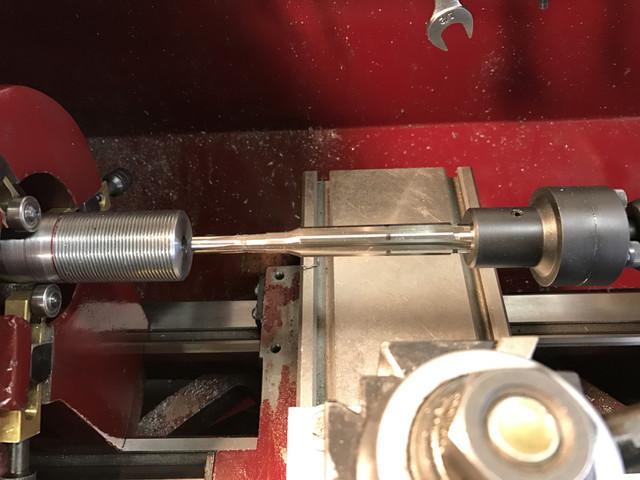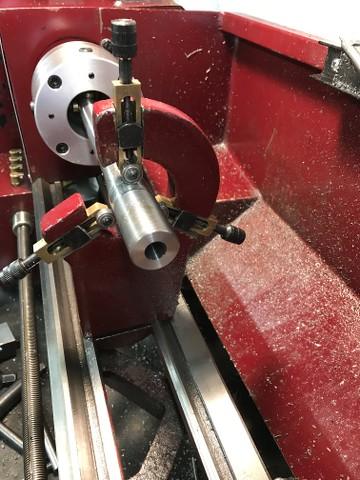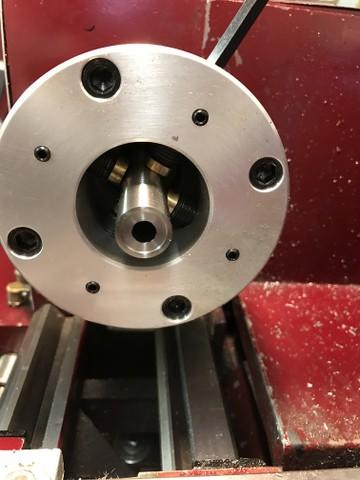I decided to try to thread and chamber my first barrel blank. I've had a Harbor Freight 9x20 lathe (I know, small Chinese lathe) for years and kinda taught myself how to use it. Since the bore is only .750", I'm limited on the diameter of the barrel I can work on. I made myself a spider for the headstock and the rear of the lathe to help dial the barrel in. I bought all the tooling I would need, range rod, reamer, floating reamer holder, go/no go gauges etc. The barrel I bought was a 27" (which I cut down to 24") 7mm and I was threading it for a Savage small shank and chambering it for a 7mm-08. Everything went really well and (at least I thought) I even turned the barrel around, indicated the muzzle and put a recessed target crown on it. I put the rifle back together and went to the range. It sighted in at 25 yards fine, but once I went out to 100 yards, it was all over the place. I thought it might have been the scope, so I bought a new scope, but never tried it again. I just took the barrel off and sent it to a good friend of mine to see If I had somehow screwed up. He checked out the barrel as best he could and told me that my threads were great and that as far as he can tell, the chamber to bore runout was .0012. The problem is with the barrel itself, it has a lot of runout in the middle of the barrel. He said he also put the reamer in the chamber and the range rod in the muzzle end and checked the runout of the OD of the barrel between centers and it was really bad. When I bought this barrel, I was told this was a brand new Wilson barrel and this is the description:
The Wilson Arms barrels are Select Match Grade, button rifled barrels; lapped and air gauged to .0002". It's too late to go back to the company I bought the barrel from, but should I try to contact Wilson directly? Any other ideas what I can do?



